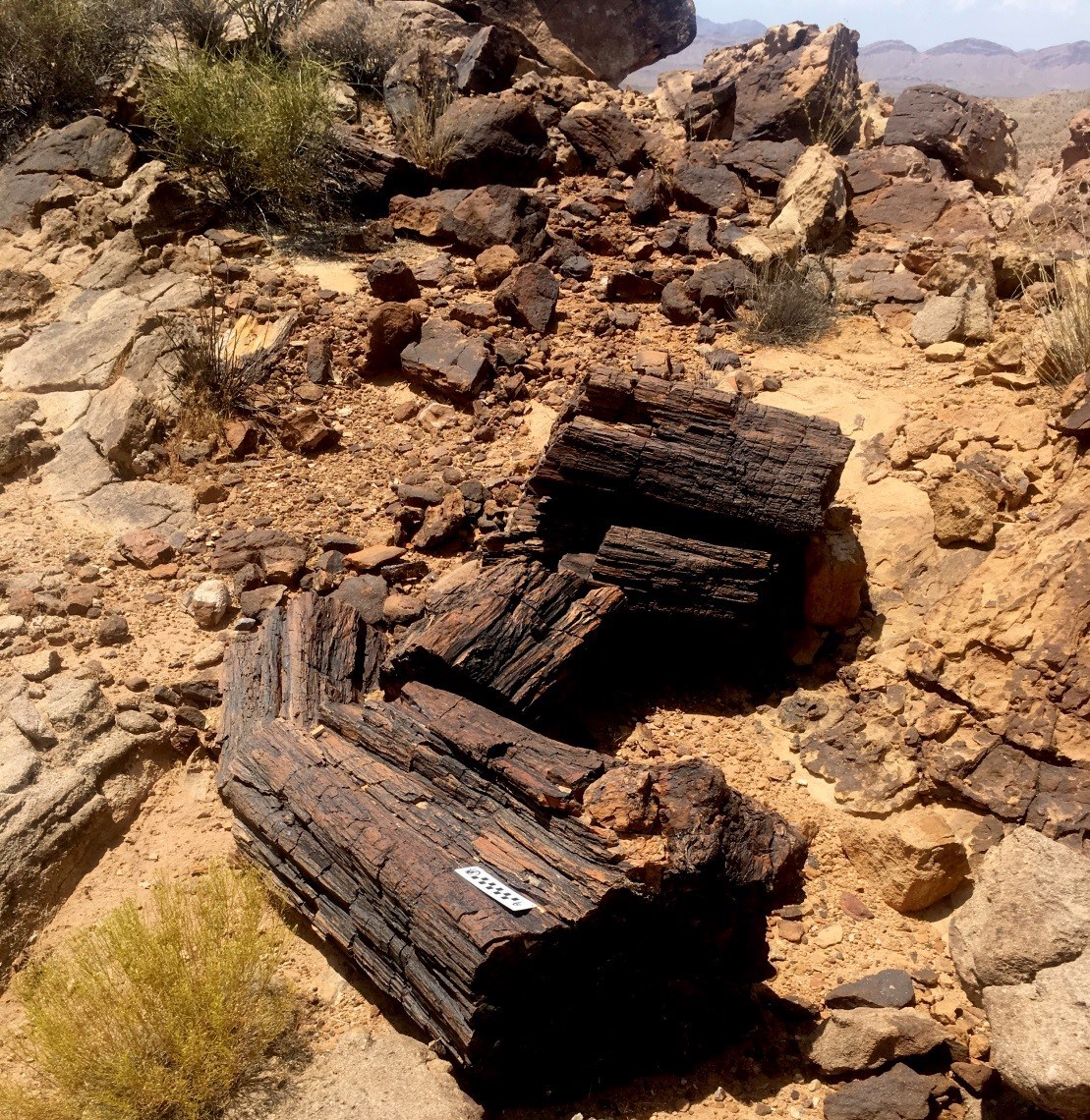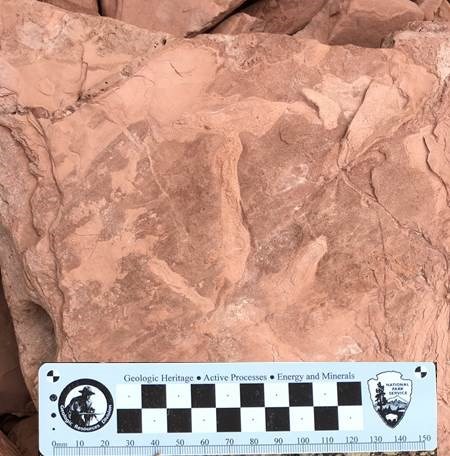Part of a series of articles titled Park Paleontology News - Vol. 10, No. 1, Spring 2018.
Article
Paleontology at Lake Mead National Recreation Area

for Park Paleontology Newsletter, Spring 2018

NPS/Andrew Cattoir
Fossil resources have been sporadically reported from the area since 1857 with the J.C. Ives expedition to survey the Colorado River corridor. The geology around the Lake Mead region has been well documented by researchers, and this has included occasional pulses of activity to collect paleontological resources as well. Lake Mead National Recreation Area now houses a small collection of fossils discovered by various researchers over the course of the last 150 years. In late 2016 through summer 2017, I was brought on through the Geoscientists-in-the-Parks Program (GIP) to help compile the paleontology story of Lake Mead. My role was to inventory museum collections, conduct field work, monitor known paleo localities, record new localities, and assemble the park's Paleontological Resources Inventory Report.
It is clear now that the paleontological record of Lake Mead is significant and expansive. This record includes fossils from the mid-Cambrian through the Early Jurassic and the latest Oligocene through Holocene, with few breaks in the geological record from those time frames. Fossils have been recovered from across the entire extent of this nearly 1.5 million acre park. Lake Mead National Recreation Area's paleo story begins roughly 515 million years ago with oceanic cover that blanketed the area for over 200 million years; this also preserved a diverse record of marine life such as trilobites (including a holotype species), corals, brachiopods (including a potentially new species), bivalves, gastropods (including a potentially new species), cephalopods, crinoids, bryozoans, and fish, to name a few. Roughly 315 million years ago, oceans receded and cycled between shallow marine and coastal environments for nearly 100 million years. Fossils in Lake Mead's collections provide evidence of this transition through marine taxa and terrestrial taxa, the latter including amphibians, early reptiles, and an abundance of petrified wood which likely represents stands of sub-tropical conifers.

NPS/Aubrey Bonde

NPS/Aubrey Bonde
Last updated: April 23, 2020
